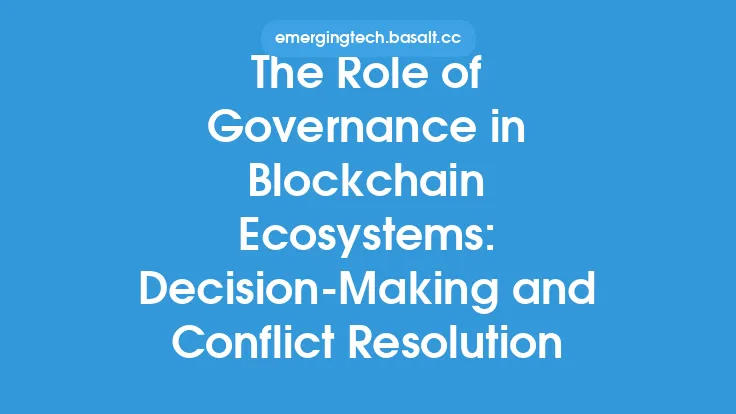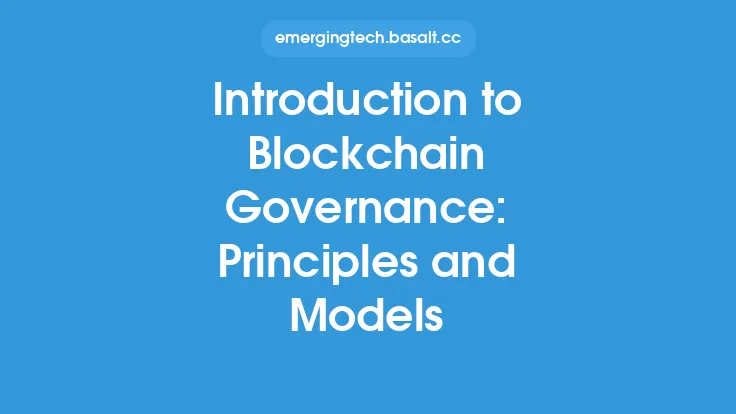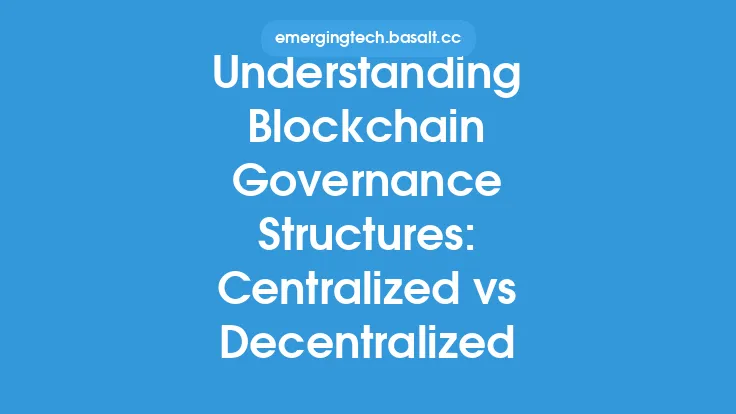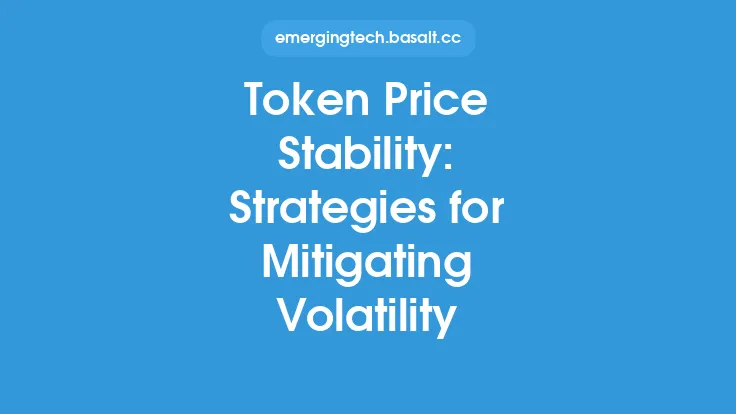The success of a blockchain project is heavily dependent on its ability to effectively engage with its community and establish a robust governance framework. Blockchain governance refers to the process of managing and maintaining a blockchain network, including the decision-making processes, rules, and protocols that govern its operation. Community engagement, on the other hand, is critical for building trust, fostering adoption, and ensuring the long-term sustainability of the network. In this article, we will explore the strategies for successful blockchain governance and community engagement, highlighting the importance of transparency, inclusivity, and accountability.
Importance of Community Engagement
Community engagement is a crucial aspect of blockchain governance, as it enables the project to build a loyal and dedicated user base. A well-engaged community can provide valuable feedback, contribute to the development of the project, and help to promote it to a wider audience. Effective community engagement strategies include regular updates, open communication channels, and incentives for participation. For example, many blockchain projects use social media platforms, forums, and chat groups to connect with their community, share updates, and solicit feedback. Additionally, some projects offer rewards or tokens to community members who contribute to the project, such as through bug bounty programs or content creation contests.
Strategies for Effective Governance
Effective governance is critical for the success of a blockchain project, as it ensures that the network is managed in a fair, transparent, and accountable manner. Some strategies for effective governance include the establishment of a clear decision-making process, the creation of a governance board or council, and the implementation of voting mechanisms. For example, some blockchain projects use a decentralized governance model, where decision-making power is distributed among a network of nodes or stakeholders. Others use a more centralized approach, where a governing board or council makes decisions on behalf of the network. Regardless of the approach, it is essential to ensure that the governance framework is transparent, inclusive, and accountable to the community.
Role of Transparency and Accountability
Transparency and accountability are essential components of effective blockchain governance. Transparency refers to the ability of the project to provide clear and timely information about its operations, decision-making processes, and financial management. Accountability, on the other hand, refers to the ability of the project to be held responsible for its actions and decisions. Strategies for promoting transparency and accountability include regular audits, financial disclosures, and open communication channels. For example, some blockchain projects publish regular transparency reports, which provide detailed information about their financial management, decision-making processes, and community engagement efforts.
Building a Strong Community
Building a strong and dedicated community is critical for the success of a blockchain project. A strong community can provide valuable support, contribute to the development of the project, and help to promote it to a wider audience. Strategies for building a strong community include the creation of community programs, the establishment of community channels, and the provision of incentives for participation. For example, some blockchain projects offer community rewards, such as tokens or other incentives, to community members who contribute to the project. Others establish community programs, such as ambassador programs or community contests, to encourage participation and engagement.
Measuring Success
Measuring the success of a blockchain project's governance and community engagement efforts is critical for identifying areas for improvement and optimizing strategies. Some metrics for measuring success include community growth, engagement metrics, and network adoption. For example, a project may track its community growth by monitoring the number of followers on social media, the number of participants in community contests, or the number of contributors to the project. Engagement metrics, such as the number of comments, likes, or shares on social media, can also provide valuable insights into the effectiveness of community engagement efforts. Network adoption metrics, such as the number of nodes, transactions, or users, can provide insights into the overall health and success of the network.
Challenges and Opportunities
Blockchain governance and community engagement present several challenges and opportunities. One of the main challenges is the need to balance the interests of different stakeholders, including developers, users, and investors. Another challenge is the need to ensure that the governance framework is flexible and adaptable to changing circumstances. Opportunities for blockchain governance and community engagement include the ability to create more decentralized and democratic decision-making processes, the ability to build stronger and more dedicated communities, and the ability to promote greater transparency and accountability. For example, some blockchain projects are using decentralized governance models to create more inclusive and participatory decision-making processes. Others are using community engagement strategies to build stronger and more dedicated communities, which can provide valuable support and contributions to the project.
Best Practices
Best practices for blockchain governance and community engagement include the establishment of clear decision-making processes, the creation of transparent and accountable governance frameworks, and the implementation of effective community engagement strategies. Additionally, projects should prioritize inclusivity, diversity, and representation in their governance and community engagement efforts. This can include the establishment of diversity and inclusion initiatives, the creation of community programs that promote participation and engagement, and the implementation of voting mechanisms that ensure all stakeholders have a voice. By following these best practices, blockchain projects can build stronger and more dedicated communities, promote greater transparency and accountability, and ensure the long-term success and sustainability of their networks.
Conclusion
In conclusion, blockchain governance and community engagement are critical components of a successful blockchain project. By establishing effective governance frameworks, building strong and dedicated communities, and promoting transparency and accountability, projects can ensure the long-term success and sustainability of their networks. Strategies for effective governance and community engagement include the establishment of clear decision-making processes, the creation of transparent and accountable governance frameworks, and the implementation of effective community engagement strategies. By prioritizing inclusivity, diversity, and representation, and by measuring the success of their efforts, blockchain projects can build stronger and more dedicated communities, promote greater transparency and accountability, and ensure the long-term success and sustainability of their networks.





